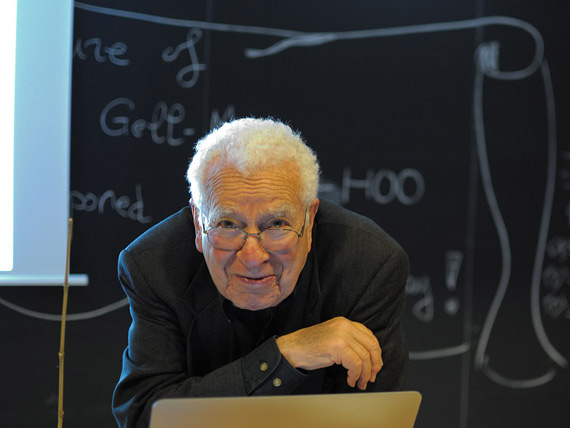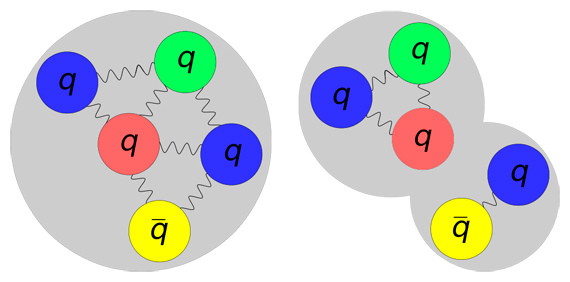The new round of experiments at the LHC accelerator began in 2015 searching for particles at the frontiers of theoretical physics. And this past summer, the European particle physics laboratory CERN announced the discovery of the pentaquark, an exotic new particle that has been hunted for using data obtained during the first round of the LHC (2010-2013) and whose existence was already predicted more than 50 years ago by Murray Gell-Mann (1929 – 2019).

In 1964 Gell-Mann solved the complex puzzle of subatomic particles with his standard model, which earned him the Nobel Prize for Physics in 1969. His model explained the nature of the then-known particles and suggested the possibility of more complex and exotic particles, such as the one recently discovered. Since that time the pentaquark has only been a hypothesis, but now that it seems to be a reality, scientists hope that their research will allow for a better understanding of neutron stars and the strong nuclear force (one of the four fundamental forces of nature).
For the moment, the pentaquark is the new piece of Gell-Mann’s puzzle. «In the 1950s many new particles were detected that no one knew how to classify, and my only wish was to solve that puzzle,» once explained the physicist, who turned 86 on September 15. Murray Gell-Mann wanted to bring order to the zoo of subatomic particles that physicists discovered after splitting the atom.
DID YOU KNOW THAT…?
Murray Gell-Mann “borrowed” the word “quark” from James Joyce’s novel “Finnegans Wake”:
Three quarks for Muster Mark!
Sure he has not got much of a bark
And sure any he has it’s all beside the mark.
In this context, “quark” is an onomatopoeia representing the gull’s cry. That was precisely what Gell-Mann was looking for: a meaningless word without a fixed spelling. Besides, the number “three” in Joyce’s text fitted with the fact that quarks combine in threes to form baryons (like protons and neutrons).
In the years that followed, hundreds of new forms of matter sowed an exciting confusion among scientists. But when the Jewish physicist began to put forward his model, he had to face a lot of reticence as not everyone welcomed his idea that protons and neutrons had to be composed of a new type of particle, which he called quarks.
‘Quarks’: even more elementary particles
There were three main reasons why some scientists were wary of the new particles proposed by Gell-Mann. For one, it was believed that protons and neutrons were elementary particles, i.e., they were not composed of other smaller particles. At the same time, quarks are permanently trapped inside other particles and cannot be found alone. And finally, everyone believed that the electric charge must be whole; electrons have a charge of -1 and protons +1, while quarks must have fractional charges (1/3, 2/3 etc.).
However, Gell-Mann proved that he was right, and because of his work, and that of many other researchers, it was possible to develop what is now known as the Standard Model of Particle Physics. Thanks to this theory, not only did it become possible to classify and sort all the new particles, but a framework was established that predicted which particles could exist among all the possible combinations with the six types of quarks that the theory specified. Gell-Mann had not only solved the puzzle, he had done so without having all the pieces and by predicting the pieces that were still missing.
It was then decided that the particles that were composed of two quarks would be called mesons, while those of three quarks would be given the name baryons. The latter category includes, for example, protons and neutrons. Thus, over the last decades, most of the particles predicted by the theory have been discovered. However, some of them are still hard to find because of their exotic nature, and among them is the pentaquark.
A strange combination of matter and antimatter
As its name suggests, the pentaquark is made up of 5 quarks, something quite exotic when you consider that most of the observed particles are composed of 2 or 3 quarks. As already mentioned, the standard model establishes a set of rules for forming particles through the combination of quarks. If we follow these rules, a priori one of the most likely combinations contains 4 quarks and an antiquark.

This is precisely the combination that was detected this July in the Large Hadron Collider at CERN. Scientists have detected a particle that fits quite well with what is expected of a pentaquark. To detect it, researchers studied the disintegration of a particle that can be broken in several different ways. One possibility is for it to disintegrate into a pentaquark plus one other particle, and the data have shown, without question, that indeed there has been a disintegration of this type. However, it is not yet known whether this particle is really a pentaquark or rather a “molecule” composed of a baryon, with three quarks bound together on one side, and a meson, with a quark/antiquark pair on the other side. The odd thing about this case is that this discovery occurred accidentally, as the experiment in which it was observed was not originally designed for this purpose.
Coincidence or not, it seems that, more than five decades later, the experiments have once again proven that Gell-Mann was right. Maybe that is why this physicist once said, paraphrasing Newton, «if I have seen further than others, it is because I am surrounded by dwarves.» Anyone would think that this sentence was hiding an egocentric and even somewhat pretentious personality. But the reality is that Gell-Mann uttered this phrase with the smug satisfaction of knowing that, 50 years later, he is still right. At the end of the day, nobody can deny that thanks to him the subatomic puzzle was solved.
Comments on this publication